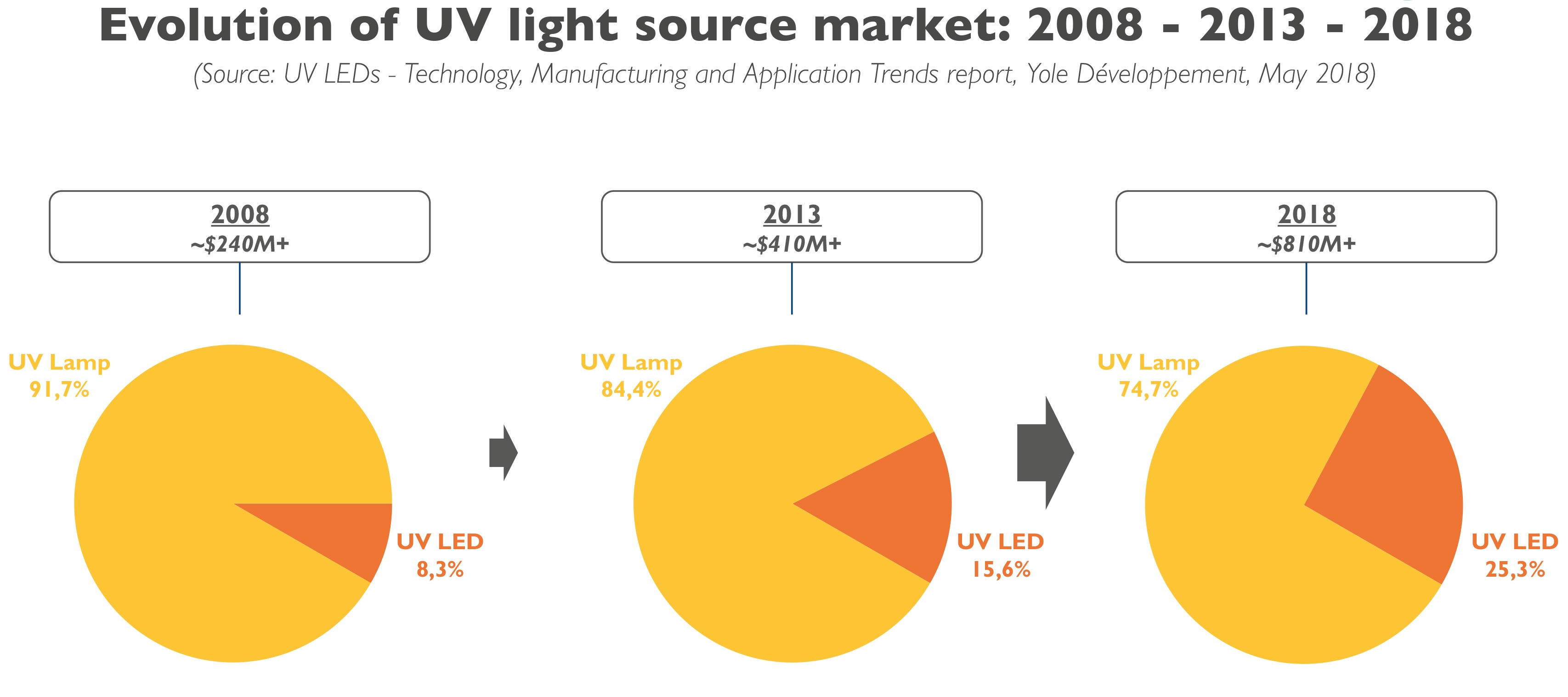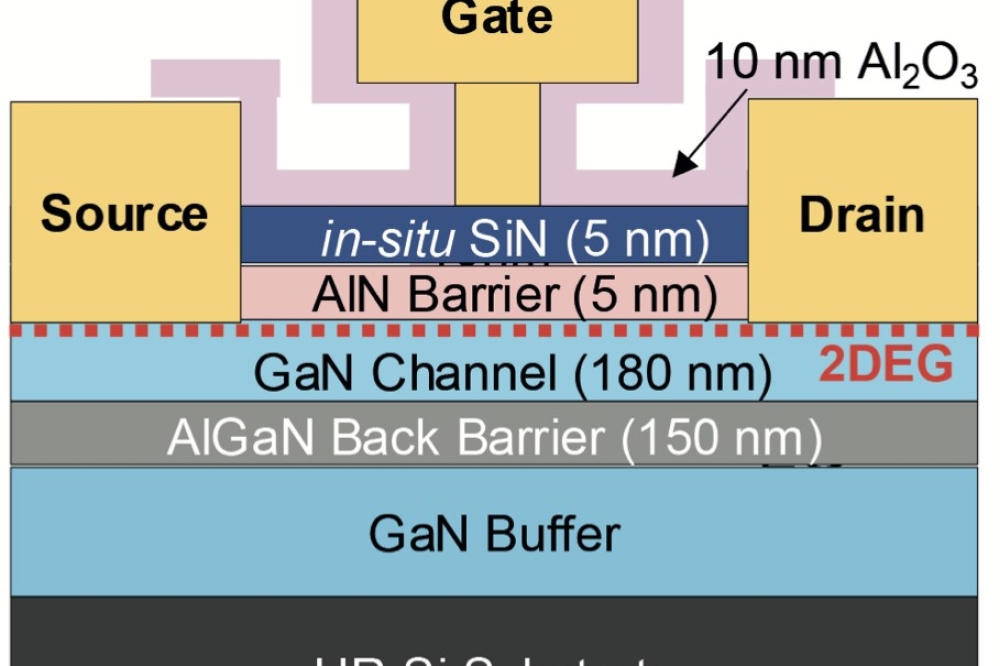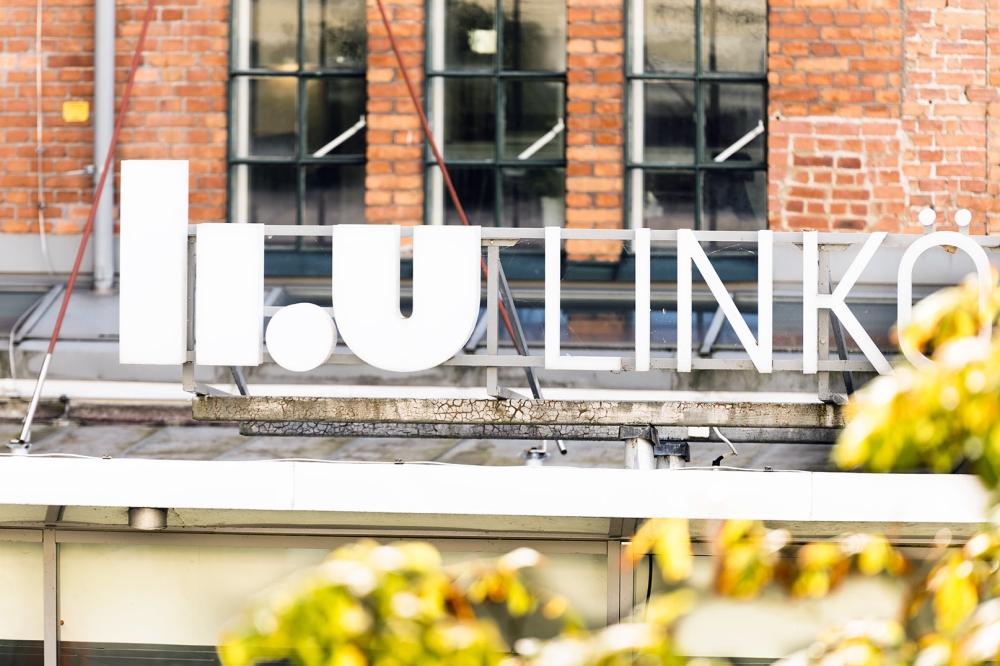UV LED market share has trebled over a decade

Within three to four years, disinfection applications will reinvigorate the UV LED market, says Yole
Yole Développement's latest report on UV LED technology forecasts that UV LEDs will reach 25 percent of market share from other UV illumination technology in 2018, rising from 8 percent of the market in 2008.
In 2008, UV LED was still considered an emerging technology and industry, trying to make its way into promising applications such as UV curing and counterfeit detection. Then, the LED industry only had eyes for the booming display applications, and was preparing for the rise of general lighting, considered to be the killer application for visible LED. Much as changed since then.
"From around ten players in 2008, there are now over 65 players in 2018", asserts Pierrick Boulay, technology and market analyst at Yole. "Since 2010, several visible LED players have turned to UV LEDs, seeking new growth drivers and higher profit margins."
The UVA LED market segment was the first to witness this industrial evolution, experiencing strong price reductions that have further accelerated the technology's penetration. But after several years of double-digit growth, UV curing application revenues, which represent more than 80 percent of the UV LED market, have started to decline due to commoditisation and a highly competitive environment. In the short-to-mid term, only players that can innovate will be able to maintain a profitable business in this area, announces the consulting company, Yole.
In parallel, UVB/UVC LED market has been less negatively impacted by the flood of new entrants, because the barriers to entry are much higher. Additionally, UVB/UVC LEDs still suffer from low performance, so entry of new players has helped boost device development. But despite devices being good enough today at a performance and cost level, the UVB/UVC market is slow moving. UV LED systems require extended development to fully benefit from the technology, which is taking more time than expected.
In the short term, the UV LED industry will experience a slow-down phase as the UV curing market starts to plateau and the UV disinfection market's boom will be delayed, says Yole. "In this context, we expect the UV LED market to reach $320 million in 2020, from $160 million in 2017", confirms Pars Mukish, business unit manager at Yole. "Then, the market will be driven by UVC applications, showing a strong increase to $1 billion in 2023."
This period is also showing a strong evolution in term of business model and strategy and these trends have been analysed by Yole's solid-state lighting team. A large part of the visible LED industry has turned to UV LEDs. However, strategies put in place differ between players, depending on wavelengths targeted. Several players still focus on device manufacturing, whereas others are vertically integrating towards modules and systems. For example, in UVA LEDs, Ushio produces UVA LED chips, packages and also now curing modules, which are supplied to printer manufacturers or end-users. In UVC, Nikkiso was initially a UVC LED manufacturer, but has moved to module and system level by acquiring AquiSense Technologies in 2016.
In addition to UV LED players, some new entrants are also trying to make their way into the industry, and mostly at the module or system level, which represents the sweet spot in terms of business opportunities. The only missing companies are the traditional UVC system suppliers, which seem still to be in "wait and see" mode.
With continuous UV LED price decreases, especially for UVC, several strategic collaborations and acquisitions have occurred recently. In the short-to-mid term, Yole is expecting further acquisitions as smaller players struggle to compete on price. Those players might represent targets or opportunities for others to vertically integrate or enter the UVC LED business.


































